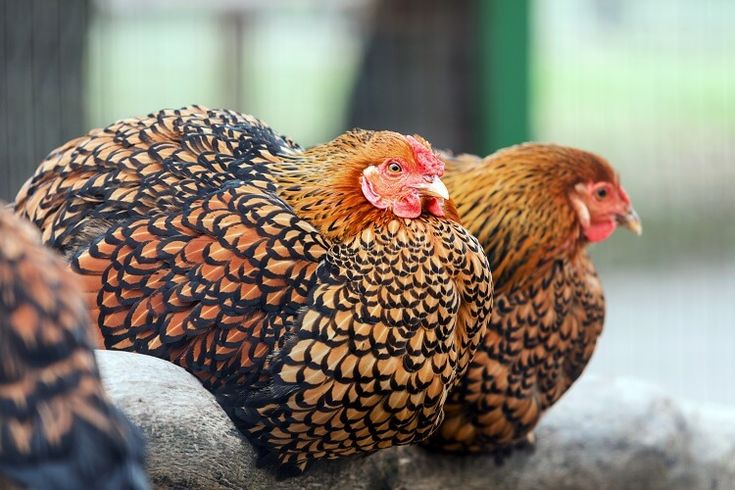The Wyandotte chicken is a quintessential American breed, steeped in history and cherished for its dual-purpose qualities. Developed in the 1870s, this breed has become a staple in poultry farming, prized for its ability to produce both quality eggs and meat. Named after the indigenous Wyandot people of North America, the Wyandotte boasts a rich heritage and a diverse array of color variants, making it a favorite among poultry enthusiasts and show breeders alike. In this comprehensive article, we will delve into the fascinating history, characteristics, and cultural significance of the Wyandotte chicken.
Origins and History
The story of the Wyandotte chicken begins in the 19th century, during a period of rapid agricultural development in the United States. Breeders sought to create a versatile chicken breed that could thrive in various climates while providing ample eggs and meat for farm families. It was during this time that the Wyandotte emerged as a result of careful breeding and selection.
The breed’s name pays homage to the Wyandot people, also known as the Huron Nation, who originally inhabited parts of the Great Lakes region. This tribute underscores the breed’s American roots and its connection to the land and people of North America.
Originally known as the American Sebright, the Wyandotte underwent several name changes before settling on its current designation. Despite its humble beginnings, the breed quickly gained popularity among farmers and homesteaders for its exceptional qualities and adaptability.
Characteristics
The Wyandotte is renowned for its distinct appearance and robust physique. This breed typically features a compact, well-rounded body with a broad breast and short, sturdy legs. Its rose comb, a unique trait characterized by a low, solid comb with a smooth surface, sets it apart from other chicken breeds.
One of the most striking features of the Wyandotte is its feathering, which comes in a wide range of colors and patterns. From the classic Silver Laced variety with its striking black and white plumage to the elegant Gold Laced and the vibrant Blue and Buff variants, there is a Wyandotte color to suit every taste.
In addition to its aesthetic appeal, the Wyandotte is prized for its dual-purpose nature. Hens are prolific layers, producing large, brown eggs prized for their rich flavor and nutritional value. Meanwhile, the breed’s yellow-skinned meat is known for its succulence and excellent flavor, making Wyandotte chickens a popular choice for both egg and meat production.
Breeding and Varieties
Over the years, breeders have worked diligently to refine and diversify the Wyandotte breed, resulting in a plethora of color varieties and patterns. Each variety possesses its own unique charm and beauty, attracting breeders and enthusiasts from around the world.
Some of the most popular Wyandotte varieties include:
Silver Laced Wyandotte: Perhaps the most iconic of all Wyandotte varieties, the Silver Laced Wyandotte is adorned with striking black and white feathers arranged in a lacy pattern.
Gold Laced Wyandotte: Featuring rich, golden feathers edged with black, the Gold Laced Wyandotte exudes elegance and charm.
Blue Wyandotte: With its slate-blue feathers and subtle lacing, the Blue Wyandotte is a favorite among enthusiasts for its unique coloring.
Buff Wyandotte: Sporting soft, buff-colored plumage, the Buff Wyandotte possesses a warm and inviting appearance, reminiscent of golden sunshine.
Black Wyandotte: Sleek and sophisticated, the Black Wyandotte boasts glossy black feathers that shimmer in the sunlight, making it a standout in any flock.
These are just a few examples of the many Wyandotte varieties available today. Breeders continue to experiment and introduce new color variations, further enhancing the breed’s allure and appeal.
Cultural Significance
Beyond its practical utility, the Wyandotte holds a special place in American culture and heritage. As a symbol of agricultural ingenuity and resilience, this breed embodies the spirit of the American farming tradition.
Moreover, the Wyandotte’s popularity extends beyond the barnyard, with the breed often featured in poultry shows and exhibitions. Breeders and enthusiasts gather to showcase their finest specimens, competing for coveted awards and recognition.
In addition to its role in agriculture and entertainment, the Wyandotte has also found its way into popular culture, appearing in literature, art, and even advertising. Its distinctive appearance and versatile attributes make it a compelling subject for artists and writers alike, further cementing its status as an American icon.
Conclusion
The Wyandotte chicken stands as a testament to the ingenuity, craftsmanship, and heritage of American poultry breeding. With its rich history, distinctive characteristics, and cultural significance, this breed continues to captivate the hearts and minds of poultry enthusiasts around the world.
Whether admired for its striking appearance, prized for its superior eggs and meat, or celebrated for its role in American agriculture, the Wyandotte remains a beloved and cherished breed, embodying the timeless spirit of the American farm. As we look to the future, it is certain that the legacy of the Wyandotte will endure, inspiring generations of breeders, farmers, and poultry lovers for years to come.







